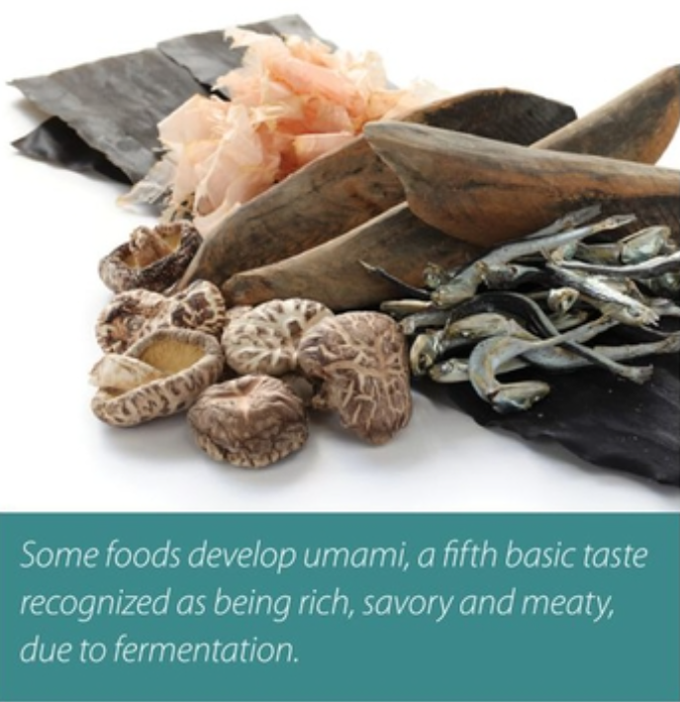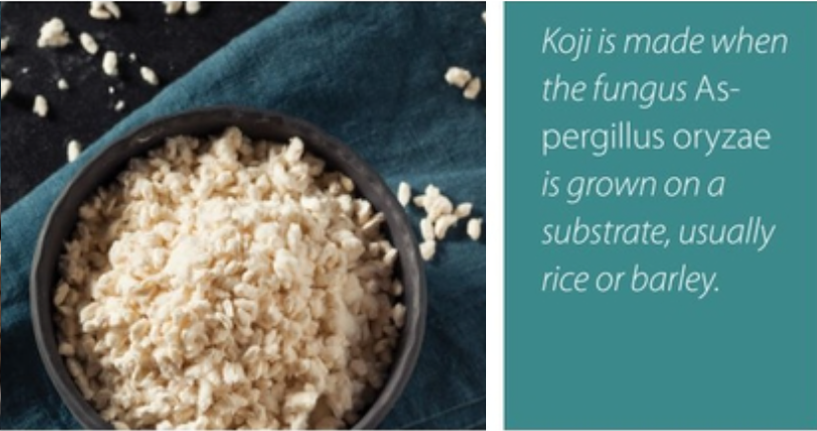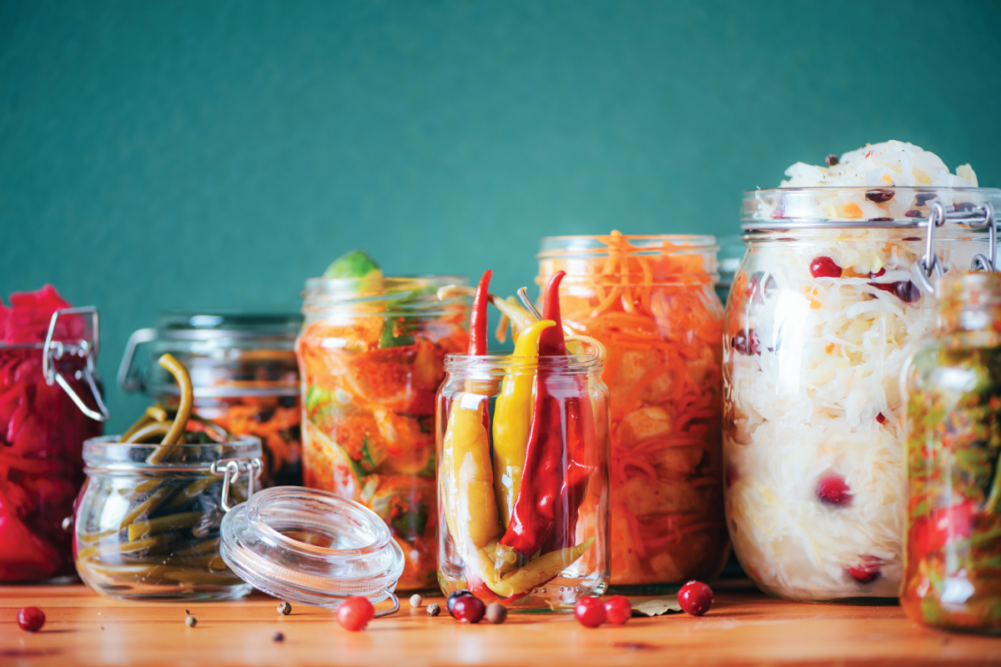CHICAGO — Iliana Regan is a self-taught chef from the Midwest who has roots in Eastern European cooking styles, most notably foraging for mushrooms, berries and edible plants. She often uses fermentation to pickle them into ingredients that are used in the dishes she creates for her fine-dining, farm-to-table, Michelin-rated restaurant in Chicago —Elizabeth Restaurant — as well as the bed-and-breakfast cabin — The Milkweed Inn — located in the Upper Peninsula of Michigan.
During a session at the Research Chefs Association’s RCA+ virtual conference, she explained how her childhood refrigerator always contained homemade foods like pickled pigs feet, sauerkraut and horseradish beets. It was tradition in her family to farm, forage and homestead cook. Today her cuisine highlights these fundamentals while emphasizing the flavor of fresh, local ingredients.
“It’s all that with a modern, whimsical, avant-garde spin,” Ms. Regan said.
Mushrooms are one of her favorites to forage, preparing varied dishes as seasonal varieties are ready for harvest. The current early spring (to-go) menu at Elizabeth Restaurant includes pork mandu, featuring shiitake mushrooms with ground pork and garlic chives served over a bed of sweet potato vermicelli, and garnished with pickled asparagus and scallion matsutake shoyu.
“Hens of the woods mushrooms are in the fall and morels in the spring,” Ms. Regan said. “I sauté the morels in butter with salt and pepper and a side of steak sauce or Worcestershire. I treat it like a steak.”
In addition to foraging, Ms. Regan relies on farmers’ markets and local farmers. What attracted her to the Upper Peninsula of Michigan was the nearby woods where she finds everything from dewberries to wild buckwheat.
She recently discovered choke berries, which are small, bitter and tannic. The seed is large, and there is not a lot of flesh.
“If I cook them down a little bit with water and spices and press them through a sieve to get all the juice out and hold back some of the skin and seeds, the liquid has a very strong vanilla flavor,” Ms. Regan said. “I was really impressed by that and excited about the discovery.”
It’s not uncommon for when Ms. Regan forages that she does not have a specific use for the plant in mind. Exploring cooking and preparation techniques is part of her style.
“I actually love stinging nettle, but not as a tea,” she said. “I like to blanch it, wring it out really well and blend it into pasta dough. This makes it so vibrant as well as green. You even get a green taste from it. The (dough) eliminates some of its bitterness. I also use it in my homemade ricotta, where it provides a nice bite.”
 Another one of her favorite wild ingredients is milkweed.
Another one of her favorite wild ingredients is milkweed.
“When the pods are pretty small, like an inch to two inches, I like to batter and fry them,” she said. “The seeds on the inside are attached to some fine fibers that become really soft, almost melted-like, when they are cooked and are hot.”
While Ms. Regan’s foraging methods are unique, they offer insights for menu developers seeking unique concepts and ingredients. And through ingredient fermentation formulators may gain the shelf life necessary to create scalable items.
Sandor Katz, also known as Sandorkraut, opened the RCA+ conference by addressing the possibilities of fermentation in research kitchens. He provided insight on how fermentation functions as a natural form of food preservation. Depending on the base product, fermentation also may generate an array of compelling flavors and textures.
“It can elevate the plainest of foods into flavor sensations,” Mr. Katz said. “Its uses in culinary traditions around the world are incredibly diverse, and yet visionary chefs are experimenting with exciting new applications of fermentation.”
Mr. Katz showed a whole head of cabbage that he fermented for three months in a covered bucket of brine. He removed the core and filled it with salt and then let the microbes go to work.
“The leaves are pliable because of the fermentation,” he said. “You can peel off entire leaves and then stuff them for cabbage delicacies.”
The pitfall of some vegetable fermentations is the product becomes too soft from the enzymes. He suggested dehydrating them until they crisp up and use that as a seasoning.
“I’ve even dehydrated the brine from making kimchi,” he said. “You can also cook down brine into a sauce. I call it ‘eau de kraut.’ I use it as a seasoning in my kitchen. It’s intensely salty and sour and delicious. It’s also shelf stable.”
Critical factors in the production of safe fermented foods are the correct level of salt, proper fermentation temperature and sufficient acid production. The correct level of salt varies by food. Proper fermentation temperature allows desirable organisms to be active while at the same time inhibiting spoilage and the growth of pathogenic organisms.
Mike Kostyo, senior managing editor and trendologist for the market researcher Datassential, Chicago, identified 10 ingredients product developers should consider in 2021 during RCA+ (see Page 12). He specifically cited fermented honey as an up-and-coming ingredient. It sits at the intersection of two prominent trends: the consumer’s affinity for honey as a sweetener and the perception of fermented products as having a health halo, he said.
Some foods develop umami, a fifth basic taste recognized as being rich, savory and meaty, due to fermentation. Umami may be added to foods through the addition of monosodium glutamate (MSG), a concentrated source of the amino acid glutamic acid, which is umami. Foods containing glutamic acid — naturally or developed from cooking, aging or fermentation — are considered umami.
“I love umami but do not typically use MSG,” Ms. Regan said. “I try to develop it on my own.”
She has various approaches to producing umami ingredients, with some taking more than a year. One project involves extracting amino acids from egg whites and mixing them with salt and her homemade koji. After the egg white-koji mixture ferments, it has a soy sauce-like quality.
Koji is made when the fungus Aspergillus oryzae is grown on a substrate, usually rice or barley. The microbe’s enzymes break down the starches, proteins and fats in the substrate, producing flavorful sugars, amino acids and fatty acids. The ingredient has a sweet, fruity smell and taste and is full of umami.
“I have met people who are doing incredible experimental things with koji,” Mr. Katz said. “They are growing it on pork chops, on all kinds of different substrates. It’s very versatile.”
New applications are coming out of research kitchens around the world, Mr. Katz said. The same is true of tempeh, which is fermented soybeans bound together by a fungus.
 “A research kitchen in Spain is vacuum sealing tempeh after fermentation, maintaining it at moderate temperature through sous vide,” Mr. Katz said. “The fungus cannot grow any longer, but the enzymes stay active.
“A research kitchen in Spain is vacuum sealing tempeh after fermentation, maintaining it at moderate temperature through sous vide,” Mr. Katz said. “The fungus cannot grow any longer, but the enzymes stay active.
“This puts those enzymes into overdrive, and they are developing rich umami flavors on the protein in the soybeans. This is the perfect example of using fermentation to take a traditional food to new places.”
Another is natto, a traditional Japanese food made from soybeans fermented with Bacillus subtilis. It has a powerful pungent smell and flavor that also has some nutty notes. But it’s the unique stringy, sticky, slimy texture that makes natto stand out in the world of fermented vegetables.
Mr. Katz suggested dehydrating them, and maybe doing so with other dried ingredients for additional layers of flavor. One example is dried natto ground with roasted sesame seeds and other seasonings, such as chili peppers and Schezwan peppercorns, or even with zaatar. He also suggested experimenting with the type of bean that the cultures grows.
By blending the dehydrated natto with seasonings and making it a condiment mix, the strong flavor many dislike in natto is more subdued. The slimy texture is also gone.
“Using small amounts adds an umami-rich layer to foods,” Mr. Katz said. “It’s an element of flavor complexity that the diner cannot put their finger on.”





